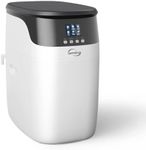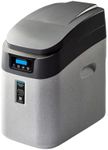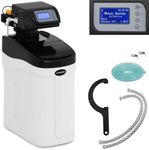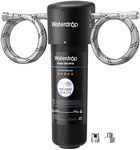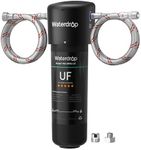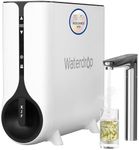Buying Guide for the Best Water Softeners
Choosing the right water softener can significantly improve the quality of water in your home, making it safer and more pleasant to use. Water softeners help to remove minerals like calcium and magnesium that cause hardness in water, which can lead to scale buildup in pipes and appliances, dry skin, and dull laundry. When selecting a water softener, it's important to consider several key specifications to ensure you get the best fit for your needs.Grain CapacityGrain capacity refers to the amount of hardness minerals a water softener can remove before it needs to regenerate. This is important because it determines how often the system will need to regenerate and how effectively it can handle your household's water usage. Grain capacities typically range from 20,000 to 80,000 grains. For smaller households with low water usage, a lower grain capacity (20,000-30,000) may be sufficient. Larger households or those with higher water usage may require a higher grain capacity (40,000-80,000) to ensure efficient operation and less frequent regeneration.
Regeneration TypeRegeneration type refers to the process by which the water softener cleans and recharges its resin beads. There are two main types: time-initiated and demand-initiated regeneration. Time-initiated systems regenerate at set intervals, regardless of water usage, which can be less efficient. Demand-initiated systems regenerate based on actual water usage, making them more efficient and cost-effective. If your household has varying water usage, a demand-initiated system may be more suitable, while a time-initiated system might be adequate for consistent, predictable usage.
Salt EfficiencySalt efficiency measures how effectively a water softener uses salt during the regeneration process. This is important because higher salt efficiency means lower operating costs and less environmental impact. Salt efficiency is typically measured in grains of hardness removed per pound of salt used. Look for systems with higher salt efficiency ratings if you want to minimize salt usage and reduce maintenance costs. If environmental impact and cost are major concerns for you, prioritize models with higher salt efficiency.
Water Flow RateWater flow rate indicates how much water the softener can process per minute, which affects the water pressure in your home. This is crucial for ensuring that your household has adequate water pressure, especially during peak usage times. Flow rates are usually measured in gallons per minute (GPM). Smaller households may be fine with lower flow rates (5-10 GPM), while larger households or those with high water demands may need higher flow rates (15-20 GPM) to maintain consistent water pressure.
Resin TypeResin type refers to the material used in the water softener to attract and remove hardness minerals. The most common types are standard resin and fine mesh resin. Standard resin is suitable for most households and provides effective softening. Fine mesh resin is better for homes with high iron content in the water, as it can better handle iron removal. If your water has high iron levels, consider a water softener with fine mesh resin to ensure optimal performance.
Size and Space RequirementsSize and space requirements refer to the physical dimensions of the water softener and the space needed for installation. This is important because you need to ensure the unit fits in the designated area in your home. Water softeners come in various sizes, so measure the available space and compare it with the dimensions of the models you're considering. If you have limited space, look for compact models that can fit comfortably without compromising performance.

